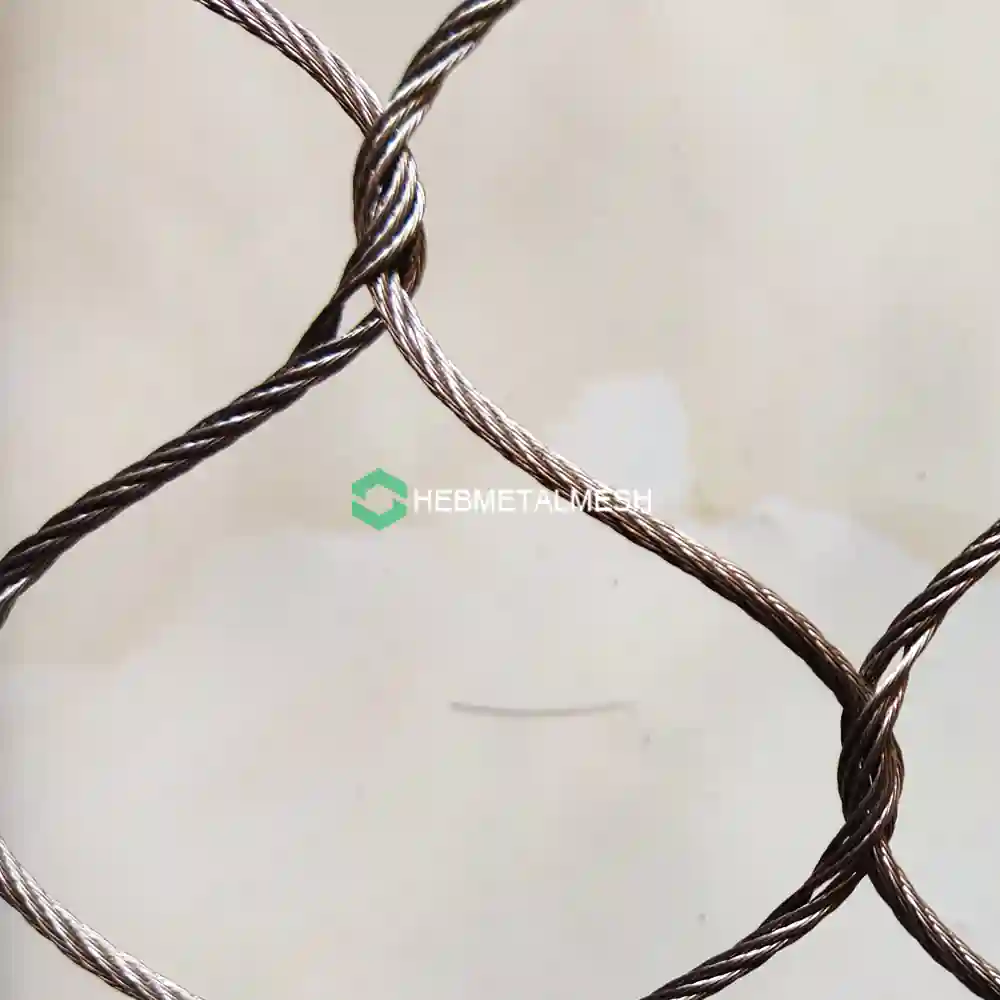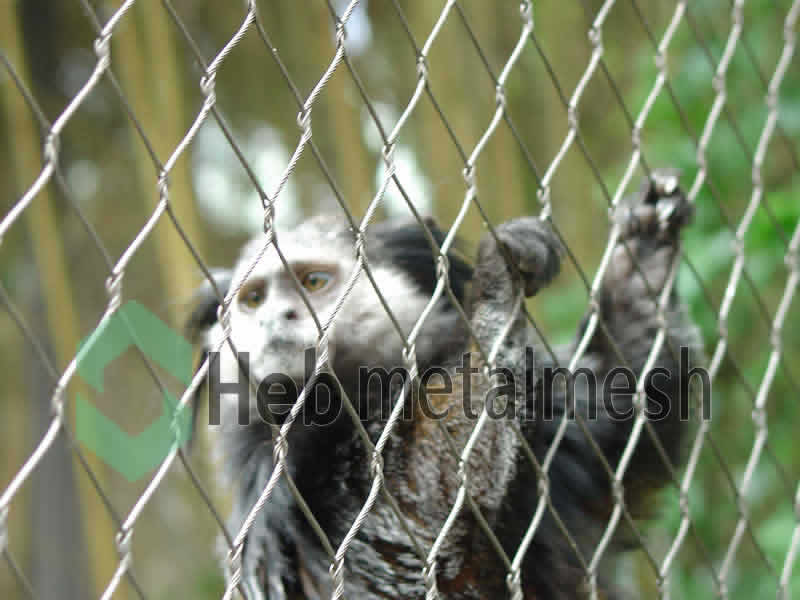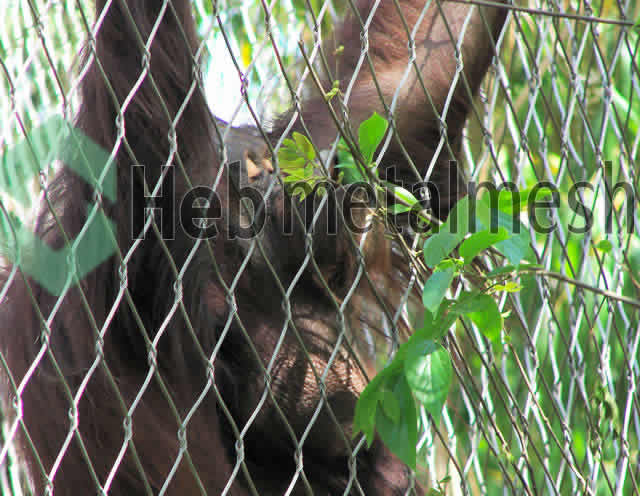Introduction to Wildlife Friendly Fencing
Wildlife friendly fencing is an essential approach that seeks to balance the agricultural and conservation needs of our ecosystems. As human activities expand, the risk of habitat fragmentation increases, posing significant threats to wildlife populations. Effective fencing solutions must consider both the agricultural requirements and the natural behaviors of animals to ensure that wildlife can thrive alongside farming operations.
Traditional fencing methods often pose barriers that can inhibit animal movement, contributing to wildlife mortality. In contrast, wildlife friendly fencing guidelines promote designs that allow animals to pass through safely while securing agricultural lands from potential crop damage or livestock predation. This dual focus not only provides protection for farmers’ livelihoods but also fosters a healthy coexistence with nature.
Hebmetalmesh, a specialist in sustainable animal fencing solutions, exemplifies these principles through its commitment to producing high-quality handwoven stainless steel netting. Their innovative fencing products aid in maintaining habitat connectivity for various species, reducing the risk of entrapment or injury. As a trusted supplier for zoos, farms, and gardens, Hebmetalmesh plays a pivotal role in furthering wildlife conservation efforts across diverse settings.
By adhering to wildlife friendly fencing guidelines, stakeholders in agriculture and conservation alike can work towards creating environments that respect and promote biodiversity. Such practices not only help in mitigating conflicts between wildlife and humans but also encourage sustainable land use that benefits all parties involved. As we delve deeper into the specifics of wildlife friendly fencing, it becomes evident that proper implementation is crucial for creating resilient ecosystems that thrive alongside human endeavors.

Building a Fence That Keeps Livestock In and Wildlife Safe
Designing a fence that is both effective at containing livestock and considerate of wildlife requires a careful balance of functionality and ecological awareness. Firstly, understanding the local wildlife and livestock in the area is essential to developing wildlife friendly fencing guidelines. Different species may have varying needs and behaviors, which should inform the fence design. For instance, deer typically prefer to jump over obstacles, making traditional stock fencing ineffective. To address this, height is a crucial design consideration; a properly built fence should be at least 8 to 10 feet high to deter deer from crossing while remaining accessible for livestock.
Choosing the right materials is also critical. Using smooth wire or mesh fences can reduce the risk of entanglement for smaller wildlife that may approach the fence. Additionally, materials such as woven wire or electric fencing can be employed, particularly when reinforced with visual deterrents like flagging or reflective tape. These elements can help animals detect the barrier, consequently minimizing collisions or attempted breaches. Sustainable materials should be prioritized to align with wildlife friendly fencing guidelines; for instance, using recycled wood or locally sourced materials can reduce the ecological footprint of the fencing project.
Another technique to promote coexistence is the incorporation of wildlife corridors. These corridors allow safe passage for animals by including gaps or openings at intervals along the fence. The implementation of such openings must be thoughtfully placed to accommodate local wildlife patterns while ensuring livestock containment. Additionally, conducting periodic assessments of the fence helps to identify necessary adjustments or repairs, ensuring the fencing remains effective over time. By following these guidelines, it is possible to create a fence that not only serves its livestock containment purpose but also respects and protects the surrounding wildlife population.
Best Practices to Prevent Animal Entanglement and Injuries
Implementing wildlife friendly fencing guidelines is essential for ensuring the safety of both domestic animals and local wildlife. One of the primary concerns with fencing is the risk of entanglement and subsequent injuries, which can occur if the fencing design does not account for the natural behaviors of various species. To mitigate these risks, several best practices should be adhered to during both the design and installation phases of fencing.
First, it is crucial to select appropriate materials that minimize the chances of animals getting caught. For instance, using smooth, solid fencing materials such as wooden planks or high-tensile wire can help reduce the likelihood of entanglement. Additionally, avoiding barbed wire and mesh with small openings is advisable, as these can trap animals easily. Instead, consider using wildlife friendly options, such as high-tensile fencing with wider spacing or even electrified fencing when necessary for protection against predators, ensuring the current is low enough to avoid serious harm.
Beyond material selection, fence design is critical to achieving a wildlife friendly setup. Consider incorporating features such as wildlife corridors or jump-outs at regular intervals, allowing animals to safely navigate around or through the fenced area without risking injury. The height of the fence is also an important factor; for smaller wildlife, lower fencing may prevent their entrapment. Additionally, ensuring the fence is properly anchored and not overly taut helps maintain its structural integrity, reducing the risk of collapse that could lead to entrapment.
Lastly, regular maintenance of the fence is vital to uphold its effectiveness. Inspecting for loose wires or damaged sections and repairing them promptly will contribute to a safer environment. By adhering to these wildlife friendly fencing guidelines, one can significantly reduce the potential for animal entanglement and injuries in both domestic and wild populations.
Height and Spacing Recommendations for Safe Fencing
When planning to implement wildlife friendly fencing guidelines, it is essential to consider the specific requirements of various species, particularly turtles and small mammals. The recommended height for fencing designed to keep these animals safe is often between 30 to 48 inches. This height effectively prevents larger animals from breaching the barrier while still allowing smaller species to navigate nearby habitats. It is crucial to consider the natural behaviors of these animals, as many are adept at climbing or burrowing. Thus, any fencing must be carefully designed to meet these challenges.
In addition to height, the spacing of the fencing materials significantly impacts the effectiveness of these barriers. For example, utilizing fencing with openings no wider than 4 inches is advisable to restrict access to smaller creatures while allowing adequate visibility. This assists in minimizing stress for the trapped animals while preserving their natural movements; such dimensions help to maintain a balance between keeping out unwanted wildlife and allowing safe passage for native species. Adjustments may need to be made according to the specific types of small mammals or reptiles in the area, as various species may have unique needs.
Furthermore, incorporating features such as burrow-proof bases is a highly recommended practice. Burying the bottom of the fencing at least 12 inches underground can prevent tunneling from small mammals. Along with height and spacing guidelines, these precautions are essential for adhering to wildlife friendly fencing guidelines. Hence, these recommendations can create a safer environment for wildlife while still serving human needs for property delineation and protection.
Official Guidelines and Regulations for Migratory Corridor Fencing
When undertaking the construction or modification of fences that may impact migratory corridors, it is vital for property owners to be aware of the official guidelines and regulations that govern such activities. Numerous governmental bodies and organizations provide comprehensive resources that address wildlife-friendly fencing guidelines, ensuring compliance with environmental standards while supporting local ecosystems.
In the United States, the U.S. Fish and Wildlife Service (USFWS) plays a pivotal role in furnishing information pertinent to migratory species. Their guidelines outline how to construct fencing that mitigates risks to wildlife and includes best practices for maintaining corridors essential for animal movement. Local wildlife agencies often have regional guidelines to address specific needs based on migratory patterns and species prevalent in different areas. Property owners can usually access these resources through state wildlife agency websites or by contacting regional offices directly.
Additionally, non-profit organizations devoted to conservation and wildlife protection, such as The Nature Conservancy and World Wildlife Fund, provide detailed resources on best practices for sustainable fencing. These organizations may also engage in community outreach to comprehend local concerns while promoting wildlife-friendly practices. Their publications often include case studies illustrating effective fencing strategies that comply with overarching environmental legislation.
Compliance with wildlife-friendly fencing guidelines is not solely a legal obligation; it reflects a commitment to preservation and responsible property management. Furthermore, adherence to these regulations can enhance community support for conservation efforts while promoting biodiversity. Property owners who wish to create or maintain wildlife corridors should actively seek out and incorporate these official guidelines into their fencing projects to safeguard both wildlife movement and the integrity of the ecosystem.
Alternatives to Barbed Wire for Eco-Friendly Fencing
Barbed wire has long been a popular choice for perimeter fencing due to its effectiveness in containing livestock and deterring intruders. However, it poses significant risks to wildlife, including injury and entrapment. Consequently, exploring eco-friendly alternatives has gained importance, particularly for those adhering to wildlife friendly fencing guidelines. These alternatives not only provide effective barriers but also minimize harmful impacts on local fauna.
One viable alternative is electric fencing, which consists of a series of electrified wires. When properly installed, electric fences are capable of deterring animals while being less injurious than barbed wire. They send a short shock to animals that attempt to breach the barrier, teaching them to stay away without causing lasting harm. Moreover, modern electric fencing can be designed to accommodate wildlife corridors, promoting safe passage for animals.
Another option is wooden fencing, specifically designs that utilize smooth planks or rails. These materials create a physical barrier but allow for the free movement of smaller wildlife, reducing risks of entanglement and injury. Additionally, visually appealing wooden fences can blend seamlessly with natural landscapes, fulfilling both functional and aesthetic roles on properties. Similarly, woven wire fencing presents an eco-friendly alternative that prevents livestock escape while permitting wildlife to move through at lower heights.
Hedgerows are another sustainable option. By planting dense shrubs or trees around property borders, landowners can establish natural barriers that deter both livestock and wildlife from encroachment. This method fosters biodiversity while adhering to wildlife friendly fencing guidelines, offering habitat for various species.
Exploring these eco-friendly fencing options underscores the necessity of balancing human needs with wildlife conservation efforts. Implementing alternatives to barbed wire allows property owners to secure their land without compromising the safety and well-being of local wildlife.
Case Studies: Successful Implementation of Wildlife Friendly Fencing
Wildlife friendly fencing guidelines have gained traction in various sectors, especially in zoos, farms, and gardens. Each of these environments presents unique challenges, yet successful implementations showcase the practical benefits of adhering to these principles. In numerous case studies, Hebmetalmesh fencing solutions have been adopted, resulting in both improved livestock management and enhanced ecological balance.
One prominent example can be observed at a local zoo that sought to create a more natural habitat for its resident animals. By utilizing Hebmetalmesh fencing, the zoo successfully crafted enclosures that not only ensured the safety of the animals but also provided a seamless transition to the surrounding landscape. This method embraced wildlife friendly fencing guidelines effectively, allowing native species to thrive in proximity while minimizing the risk of animal escape or human encroachment. The fencing system was designed to deter larger predators while remaining transparent enough to promote visibility and interaction, ultimately enhancing visitor experience.
In agricultural settings, a farm in the midwestern United States employed wildlife friendly fencing to protect crops and manage livestock efficiently. The introduction of Hebmetalmesh fencing allowed the farmer to prevent deer and other wildlife from damaging produce while maintaining a safe space for livestock. This particular case highlighted the dual benefit of securing crops against wildlife while promoting healthier animal husbandry practices. The farmer reported a significant decrease in crop loss, which led to increased productivity and sustainability. Moreover, the farm’s adaptive fencing approach played a role in preserving local flora and fauna by allowing wildlife to navigate through the landscape without obstruction.
In residential gardens, wildlife friendly fencing has transformed outdoor spaces into sanctuary-like environments. Homeowners have successfully implemented adaptable fencing solutions that discourage pests while inviting beneficial wildlife. The use of Hebmetalmesh fencing enables these gardens to flourish, creating a vibrant ecosystem that supports a variety of local species. With these case studies in mind, it becomes evident that following wildlife friendly fencing guidelines can yield multifaceted benefits across diverse settings, from securing livestock to preserving the natural environment.
Challenges and Solutions in Wildlife Friendly Fencing
When designing and constructing wildlife friendly fencing, various challenges can arise that may compromise both the integrity of the fence and the safety of nearby wildlife. One common issue is the potential for entrapment of animals, particularly smaller species that can become caught in traditional fencing materials. To address this concern, utilizing high-quality mesh fencing with appropriately sized openings is essential. This type of fencing allows for safe passage of smaller mammals and other wildlife species while still providing the desired barrier.
Another significant challenge is the propensity for larger animals to jump over or break through conventional fencing. Species such as deer or bears often require special considerations to be effectively deterred. Solutions include installing taller fences, often between 8 to 10 feet high, or incorporating features such as barbed wire at the top to discourage efforts to jump. Additionally, adding a smooth, angled overhang can enhance the fence’s wildlife-friendly qualities by making it more difficult for larger animals to gain access.
Furthermore, wildlife friendly fencing must also consider the environmental impacts of the materials used in construction. Common fencing materials can disrupt local ecosystems by introducing non-native substances or creating barriers to animal movements. Opting for sustainable and recycled materials can mitigate these effects while supporting the overarching goals of wildlife friendly fencing guidelines. Implementation of natural fencing, such as living fences formed by native vegetation, can also provide benefits by enhancing habitat connectivity and offering refuge for various animal species.
In conclusion, while constructing wildlife friendly fencing comes with its unique set of challenges, these obstacles are not insurmountable. By understanding and applying appropriate solutions, such as mesh fencing for smaller animals and sustainable materials, we can effectively create barriers that promote both human needs and wildlife conservation. These best practices therefore serve to enhance the ecological integrity of the environment while fulfilling the goals of modern fencing standards.
Conclusion: The Future of Wildlife Friendly Fencing
In reviewing the significant aspects of wildlife friendly fencing guidelines, it becomes clear that these practices are essential for ensuring the coexistence of human activities and wildlife habitats. As land development and agricultural practices expand, the necessity for fencing solutions that take wildlife needs into account has never been more critical. The guidelines provided throughout this article highlight various strategies, including the use of natural materials, proper fencing height, and specific design features that minimize wildlife entrapment. These strategies not only aid in protecting local fauna but also contribute to the overall health of ecosystems.
The role of sustainable fencing in responsible land management cannot be overstated. With wildlife corridors and safe passageways incorporated into fencing design, we can significantly mitigate the adverse effects that traditional fencing methods impose on animal movements. It is vital for landowners, farmers, and developers to adopt these wildlife friendly fencing guidelines actively, as they provide a path forward for harmonizing land use with wildlife conservation efforts. Such practices reflect a commitment to preserving biodiversity and enhancing ecosystem services, ultimately benefiting both wildlife and agricultural productivity.
Moving forward, manufacturers like Hebmetalmesh have an important role in the promotion of these guidelines. By creating fencing solutions that prioritize wildlife interactions, these companies contribute to ongoing efforts for environmental stewardship. The focus should be on producing adaptable fencing systems that are not only effective for livestock containment but also considerate of wildlife’s natural behaviors. In conclusion, the future of wildlife friendly fencing hinges on collaborative partnerships among land stewards, manufacturers, and conservationists dedicated to creating sustainable solutions that respect and enhance our shared environment.


